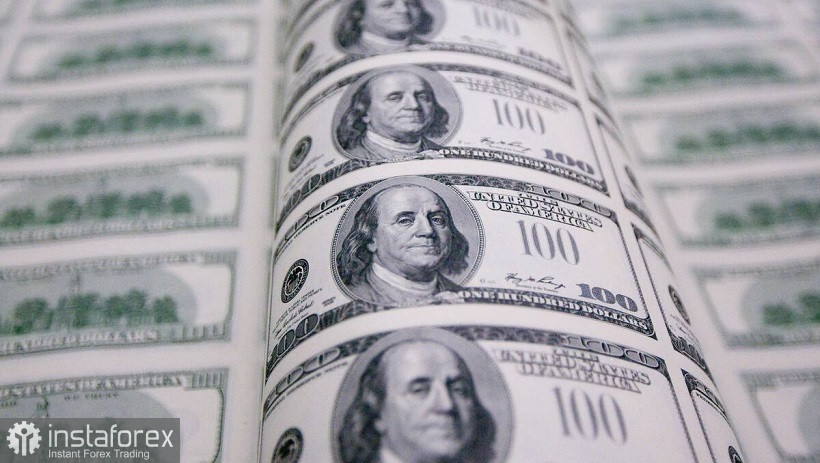The release of data on the growth of US inflation yesterday did not impress EUR/USD traders — neither sellers nor buyers. The pair was trading in a narrow price range, within the 5th figure, demonstrating the indecision of the market participants.
The inflation report was ambiguous. On the one hand, the consumer price index showed the first signs of a slowdown for the first time since August last year. On the other hand, the April figures were not much different from those in March, when a 40-year high was reached. In annual terms, inflation retreated minimally from the March peaks: for example, the overall CPI came out at 8.3%, while in March it peaked at 8.5%. A similar picture emerged with the core consumer price index (growth to 6.5% in March, 6.2% in April against the forecast of 6.0%). In general, the result exceeded market expectations, although it reflected a minimal slowdown in inflation.

Such a controversial report made me think—is it possible now to talk about the trend that Jerome Powell spoke about at the end of the May meeting? He suggested that inflation will begin to "flatten out" in the second half of this year, reacting, among other things, to the actions of the Fed. In doing so, he pointed to a "favorite" inflation indicator—the core price index for personal consumption expenditures — which has indeed slowed its growth, judging by the latest release. However, in the case of the CPI, the situation is somewhat different, since the April figures actually "duplicate" the March ones. That is why EUR/USD traders were in no hurry to open longs yesterday: the pair continued to trade in a narrow price range.
Today, the scales are still leaning towards the bears. The pair updated another price low, reaching 1.0422. The last time the price was at this level was in January 2017. Apparently, market participants, for the most part, came to the conclusion that "the glass is half full" than vice versa, so the dollar began to gain momentum. Such conclusions were facilitated by the comments of a number of Fed representatives who spoke this week. They voiced hawkish rhetoric, supporting the dollar bulls.
In particular, Cleveland Fed President Loretta Mester (who, by the way, has the right to vote in the Committee this year) stated that the option of raising the rate by 75 basis points is "not excluded." According to her, everything will depend on the further trajectory of inflation. Mester made it clear that the regulator may apply a 75-point increase as an emergency measure if the main inflation indicators show growth. According to her, inflation is too high, and as long as it remains at this level, the risk of rising inflationary expectations will be increased. In general, the head of the Cleveland Fed noted that the idea of raising rates by 50 points "at the next couple of meetings" is "absolutely comfortable and acceptable." In addition, she recalled that the neutral nominal interest rate is about 2.5%, but the Federal Reserve "will most likely have to go above the neutral level to slow down inflation."
Similar thoughts were voiced by another representative of the Fed, who has the right to vote in the Committee—New York Fed President John Williams. According to him, a 50 basis point increase in the rate "at the next two meetings" makes sense, while assuming a nominal neutral rate of 2.5–3.0%. He also de facto did not rule out a more aggressive pace of monetary tightening (although he did not directly announce the option of a 75-point increase), saying that "the Fed will adjust its policy depending on the circumstances."
James Bullard, another member of the Fed's Open Market Committee (who also has voting rights this year), said today that the latest inflation data "indicates that the Federal Reserve may continue to raise rates in 50-point increments "on a number of next meetings."
Thus, the seemingly contradictory inflation data did not soften the position of the Fed. This is quite understandable, because, despite the formal slowdown in growth, annual inflation remains above the 8% level, that is, in the region of 40-year highs. Therefore, the members of the regulator (at least those who have already voiced their position and who have the right to vote in the Committee) confirmed their commitment to a tight monetary policy. The likelihood of a 50-point rate hike in the June, July, and possibly September meetings has increased significantly, thanks to which we are seeing another dollar rally in the foreign exchange market.
The European Central Bank, in turn, is still discussing the advisability of raising interest rates in the third quarter of this year.
Thus, for the EUR/USD pair, any corrective upward pullbacks can still be used to open short positions. The bears broke through the support levels of 1.0500 and 1.0450, so the next targets moved downward again—1.0400 and 1.0350 (this is already the area of 20-year price lows).





















